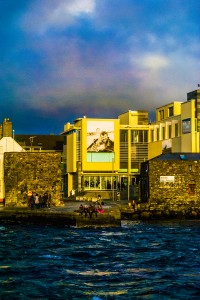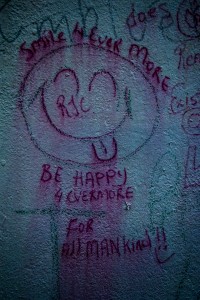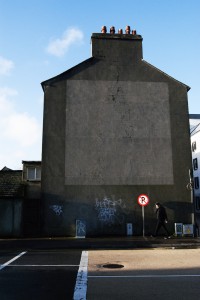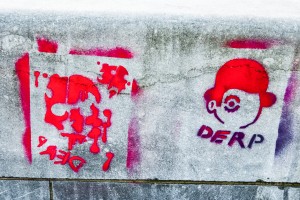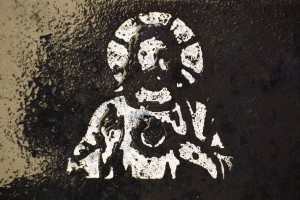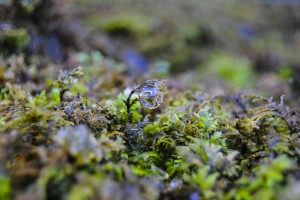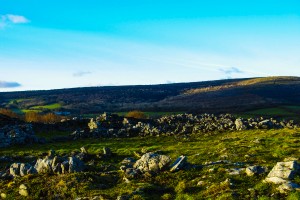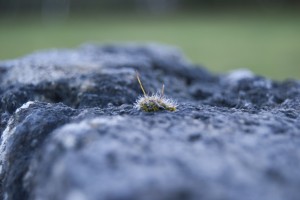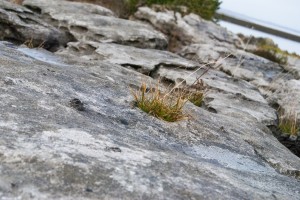“To be Irish is to know that in the end the world will break your heart.”
Daniel Patrick Moynihan
I’ve always been ashamed when Shane McGowan queries, “Have you ever walked the lonesome hills, or heard the curlews cry? Or seen the raven black as night upon the wind-swept sky? To walk the purple heather or heard the west wind sigh, and know that’s where the rebel boys must die?” For years, my answer has always been no. And I’ve been ashamed. And now my answer is yes, I have done these things, Shane. I wish it weren’t so. In the curlew’s shrill keening there is only loneliness. A black-winged raven wheeling in widening blue-grey gyres brings only sorrow. Ireland belongs to the dead.
All my life, I’ve been proud of my Irish blood—what little of it there is in my patchy pedigree—and heritage: St. Patrick, Catholicism, “Danny Boy,” Guinness. Oh, sure. I could tell you about the horrors Ireland survived. The Potato Famine. Oliver Cromwell. The Easter Rising. The Black and Tans. But they were just names and facts to me, snug in my home reading sanitized stories—no Emer the Great-Bladdered—of Cuchullain or Red Hugh O’Donnell. All the same, I was proud.
Here, in the looming shadow of the Burren’s rocky hills, all that pride is gone. It’s hard to care about Ireland’s past glories when you’re dripping wet and struggling to light a stack of peat bricks. Sure, you’re soaked from your own stupidity in being caught out in a rainstorm, and the peat blocks won’t catch because you’re incompetent at starting fires, but it still takes your mind from Roddy McCorley or Kevin Barry and all that lot. Walking the lonesome hills also leaves little time for thinking about Fenian rebels. The scrubby brush and long wicked vines with their tearing thorns are more than enough to keep your attention. Otherwise you’ll be joining the bold rebel men in their long dark sleep. Losing your footing up on the Burren’s hills can result in a long slide down—and the rocks are slick with winter rain. I wonder now why anyone would find Ireland worth dying for. Frank McCourt’s father wanted his children to swear to die for this country. This land of rock and rain and memories. It’s cold here. And wet. Why did Cromwell want Ireland? Why did ANYONE want Ireland? Having climbed the hills surrounding Ballyvaughan village, I don’t understand what kind of maniac would keep climbing a slope littered with slick sharp rocks and treacherous spongy moss and tripwire thorny vines, crest ridge after ridge while never reaching the summit, and decide, “By all the gods, I like it here!” Perhaps the same kind of madmen who would fight to defend a land without “water enough to drown a man, wood enough to hang him, nor earth enough to bury him.” I’m not that kind of person.
But for millennia, settlers and raiders have visited Ireland. Ring forts—earthen doughnuts glazed with brilliant emerald grass and sprinkle d liberally with whitethorn and scrub brush—mar the Irish landscape like gargantuan acne scars. More than forty thousand such excavations litter Ireland. Each one belonged to men and women who had been dead fifteen hundred years when St. Patrick first stepped onto Irish soil. And they cannot be removed. Whether fearing the Daoine Sidhe (the fairies) or stiff penalties from the European Union, no farmer will touch them. And so these reminders of the old ways remain, sheltering nothing but cows and scrub where sheep and their owners would have huddled in the cold damp ages ago. What kind of men and women were these dead people? Did they carry a foolish pride in their clans? Were they happy? Or was life nothing but a hardscrabble drudge of rain and filth and death?
Death certainly was a constant for these ancient Celts. Their wedge tombs and cairns and dolmens dot the Burren. Thousands of ancient graves, some older than the Egyptian Pyramids, too many to even begin excavating. In each crypt archaeologists have examined, dozens of skeletons have been found. None of these early settlers survived beyond thirty years of age.
Small surprise, then, that even as far back as Roman times there’s evidence that the “Hibernians” partook of the poitin a bit too much. When your landlord asks for rent and you’ve nothing but your house and a couple scrawny cows, you might as well have a drink. And if you’re having a drink, might as well go down to the pub for it. It’s warm there, after all, and your neighbors will be there, too. So you have a pint, and another one, it’s toasty from a roaring fire, and you’ve another pint still and play a hand of cards, and Big Malachy McCabe and Sean Moloney are playing fiddle and accordion lively-like, and Jimmy Lanigan buys a round, and you forget your sorrows—Ah, there’s a lot of ‘em—and you tell some stories. About the Good Folk, maybe, or heroes like Cuchullain, long dead now, and there’s the dead again, coming back to haunt you. No escape from those unquiet ghosts, even in the warmth and the music and the fine company.
The rich folks thought they could run from Ireland’s dead. Conquering British fools! Ghosts don’t lie quiet here. For all the gentry’s money and influence, they couldn’t get away. Sure, sure, they paid and cajoled to get Galway’s gallows moved outside the walls, away from their fine homes. Those fools. There’s bones piled up six feet deep in the earth below Galway’s streets. When they strolled down cobbled Galway streets or frolicked (only the rich have time to frolic) in Eyre Square, they strolled and frolicked over ancient graves. What about ceili dancing? Ceili dancing’s no escape either. What kind of freedom is there in stepping and spinning to “The Siege of Ennis” or “The Battle of Aughrim?” All the sets and fancy patterns ever danced won’t make those battles less bloody or return their slain to the living world. Death’s grip can’t be escaped. These aren’t tales of the Daoine Sidhe where you can waltz off free through trickery or courage.
Not that old tales will survive for long, now. Take Eddie Lenihan, say. A grasshopper of a man, all agitated movement and Gandalf beard, Lenihan doesn’t tell stories—he becomes them, bouncing around, clutching his throat, waving his arms frantically. Listening to Lenihan pontificate on fairy forts or the inherent danger of cutting a whitethorn bush (if he doesn’t believe in the Good Folk, he hides it well), you begin to wonder if maybe, just maybe, there is Another Crowd out there, across beyond the veil. The remnants of a defeated race, still haunting their former land. Lenihan hops around, gesticulating, as he describes a fairy hurling match, and you’d think him a sugar-laden child on Christmas morning. Then you see his hands shake a bit as he sips from a glass of water, notice all the sources for his stories are old or dead, wince when he admits he can’t drive anymore due to his health. Slowly, it sinks in—Eddie Lenihan is one of the last seanchai, one of the few remaining storytellers. How many legends will go with him to his grave in three decades, two decades, one? Too many. Dead tales for a dead land.
The old tongue is dying, too. Irish Gaelic is a mandatory subject in school here but that doesn’t mean a tourist is likely to hear it spoken. In Galway, a city with high percentages of Irish-speakers (a whopping 10% of the population), you might be lucky enough to catch some phrases tossed about by greying men over their pints, or witness a teenager, prodded by his father, belt out a few verses at night’s end. Irish Gaelic is useless now. Stores display it out of legal obligation, but business is conducted in English.
What business there is. Ireland suffers from its second recession in ninety years. Limerick’s side-streets and apartment-fronts are littered with garbage. Every third store is shuttered, imprisoned behind metal bars. Dog waste spots the sidewalks like canine-produced landmines. Ballyvaughan—picturesque Ballyvaughan with its grand stone church with the one stained-glass window and its cozy pubs full of warmth and delicious curry smell, all surrounded by the Burren’s hostile majesty—is three-quarters closed. Most of the stores are shuttered for the winter, the tourist off-season. Rumors around town claim some shops won’t survive another year. I wish I’d more money to spend. Fiscal life-support.
One of my housemates is surviving on potatoes. Just potatoes, lots of them, with butter and salt. There’s an irony there. A sick sort of humor which must be necessary to survive here. When the weather and landscape conspire against you and you’ve sold your last cow to make rent, that ability to visit the pub and laugh about life over a pint must be evolution at its peak. Whatever that genome is, I lack it. While I can see the dark hilarity, I cannot laugh at it. I’m not Irish enough to live here. And I’m glad of it.
Ireland belongs to the dead. Every blade of emerald grass, every slab of Burren limestone, every turf of peat—all of it remembers. The countryside is dotted with property lines and old homes ruined and intact. Each stone wall dividing Ireland into forty shades of green is the work of some long-dead farmer or herder laboring countless hours to lift massive chunks of stone into place. Despite layers of jackets and sweaters, the cold and damp leach into your bones like the Morrigan’s unwavering glare. Crow-headed they called her. Are those ravens or the Morrigan’s favored bird circling above at grey dusk? According to some versions of Cuchullain’s death, the enemy army didn’t dare approach his dying form until they saw a bird perch on his shoulder and sip the blood from his battle-wounds. What no version mentions is: Was it a crow, or was it a raven? A carrion-bird, or the death-goddess herself? Does it even matter? The land remembers its dead. Bernie McGill’s words don’t apply here: “Some ghosts are so quiet you would hardly know they were there.” Ireland’s phantoms aren’t quiet. They scratch at the windowpanes and howl around the chimney. They remember. The land remembers. And it will not let you forget: Ireland belongs to the dead.
Ireland is beautiful. The Burren’s karst landscape, all jagged grey rock ripping up through scraggly grass like a steak knife through deer hide, could bring tears to your eyes. (Or maybe it’s the pain of twisting your ankle when that clump of moss doesn’t have a rock supporting it after all.) It wouldn’t be hard to just sit in a pub like Lough’s in Ballyvaughan or Taaffe’s in Galway and never leave, living off Guinness and chips until that’s all your blood and flesh were. But I don’t belong. I wasn’t raised here in this dualistic land of the dead and the sublime. Walking on graves is bad enough when done occasionally. I couldn’t live my life where sidewalk hides skeletons. Ireland’s harsh splendor and unquiet dead are not for me. And I can accept that. I’ve seen what my life could be, surrounded by old glory and old ways gradually being subsumed into modernity. And that glimpse of ferocious beauty will sustain me for a lifetime in the valleys of the easy mundane.
*****
The following is a collection of graffiti and street art, primarily from Galway. My goal was to provide a glimpse into the city’s inner workings through what artists and vandals display in public spaces. Click to enlarge.
*****
The following are a collection of photos I took in the Burren area, inspired by a quote from one of Oliver Cromwell’s generals: “(Burren) is a country where there is not enough water to drown a man, wood enough to hang one, nor earth enough to bury him…… and yet their cattle are very fat; for the grass growing in turfs of earth, of two or three foot square, that lie between the rocks, which are of limestone, is very sweet and nourishing.” The general’s words are indeed true, as the Burren is filled with a stunning interplay between flora and rock. Once again, click to enlarge.
